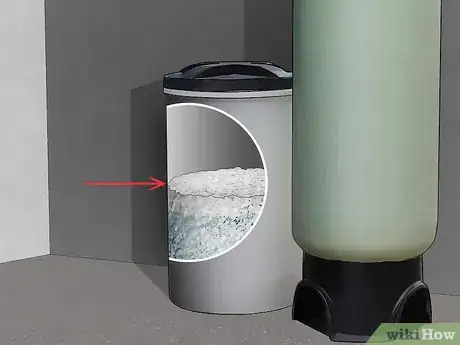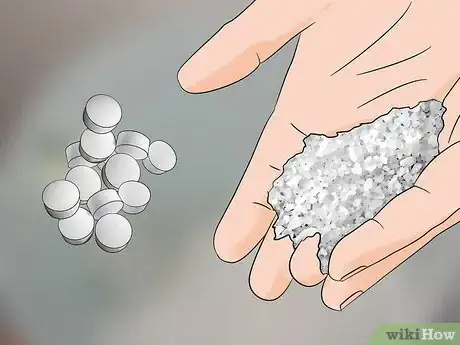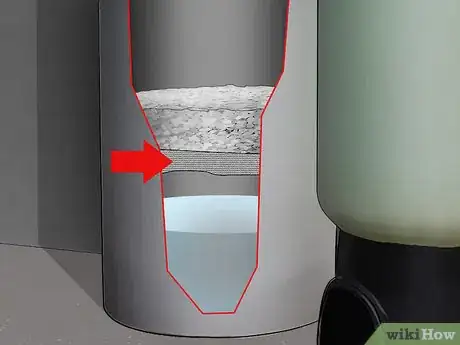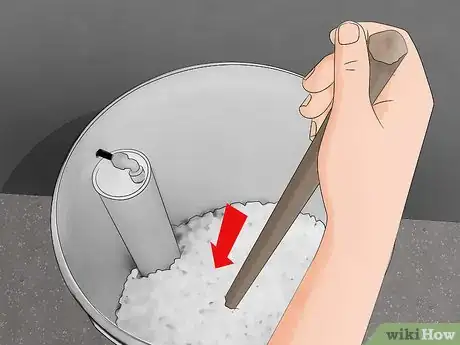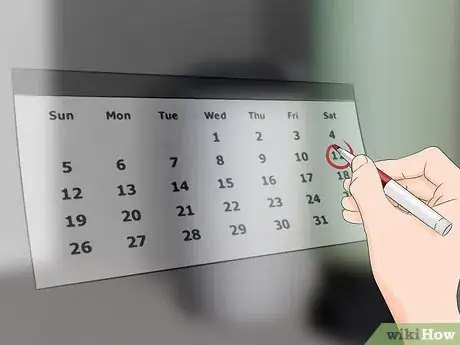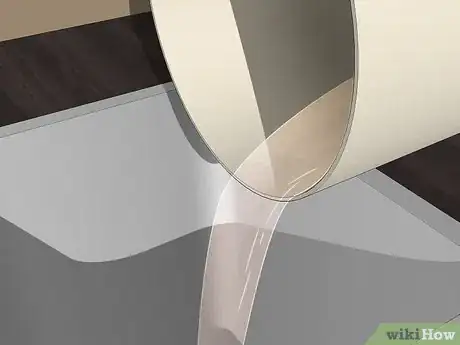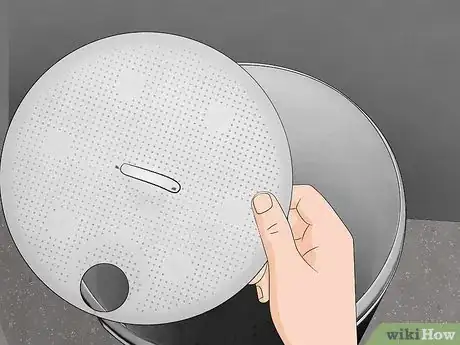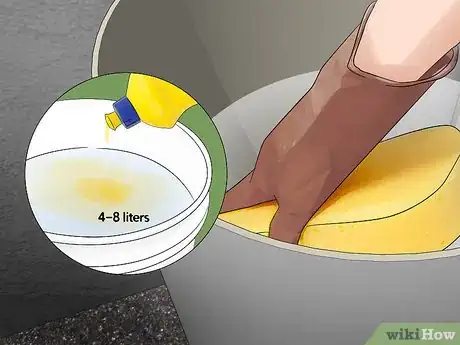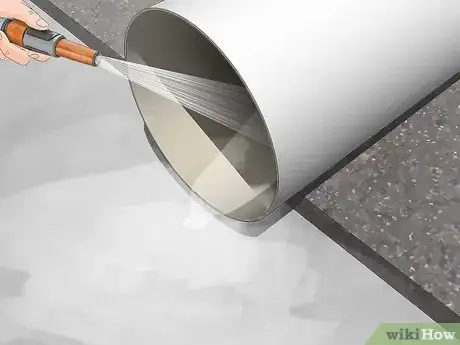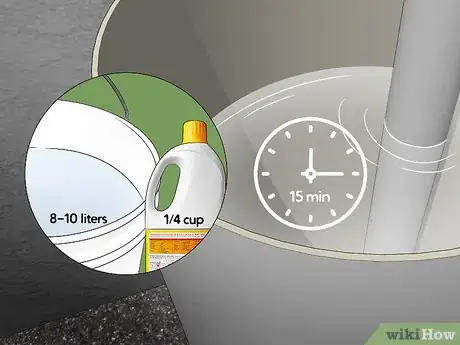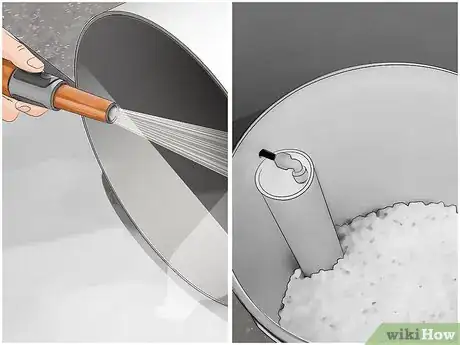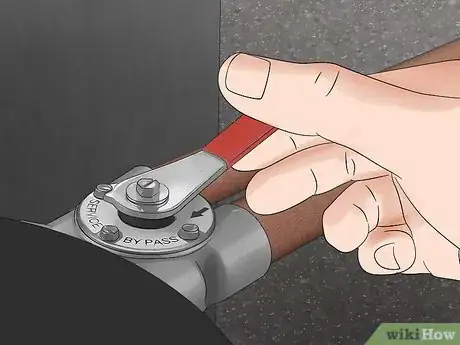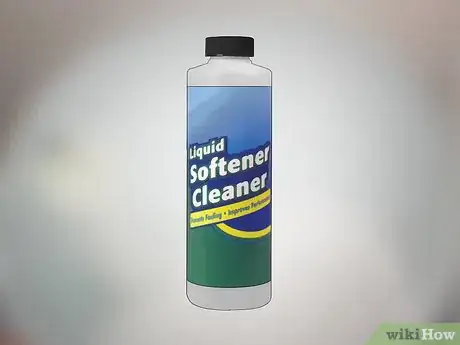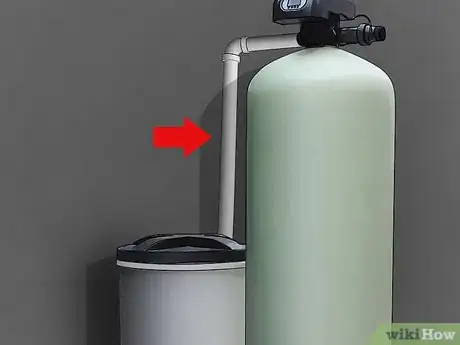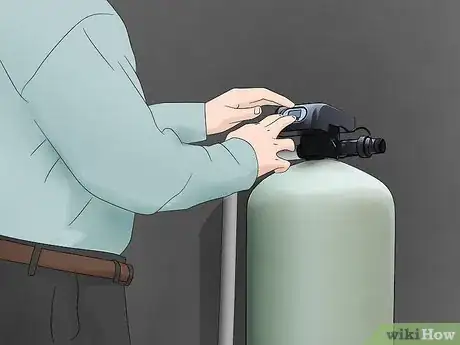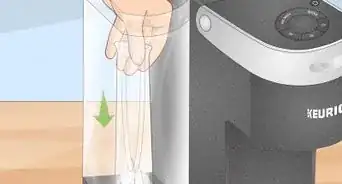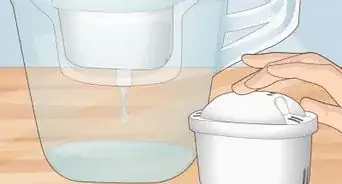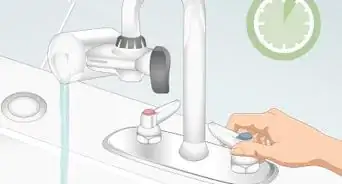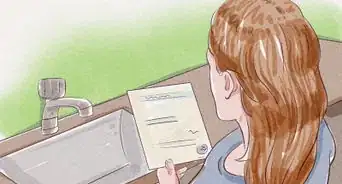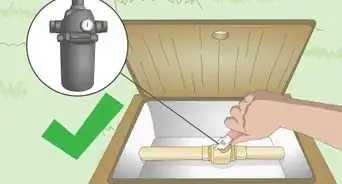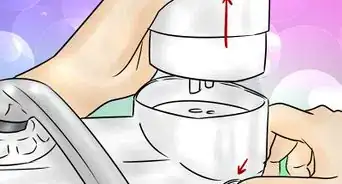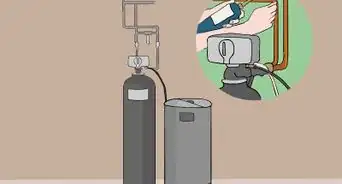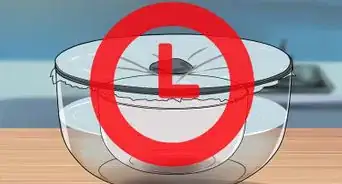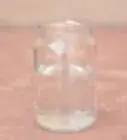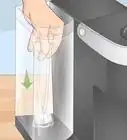This article was co-authored by wikiHow Staff. Our trained team of editors and researchers validate articles for accuracy and comprehensiveness. wikiHow's Content Management Team carefully monitors the work from our editorial staff to ensure that each article is backed by trusted research and meets our high quality standards.
wikiHow marks an article as reader-approved once it receives enough positive feedback. In this case, 89% of readers who voted found the article helpful, earning it our reader-approved status.
This article has been viewed 225,973 times.
Learn more...
Abrasive 'hard' water contains high levels of calcium and magnesium, causing lime scale buildup and interfering with soap's ability to clean. For homes in some geographical locations, a water softener system is a vital household appliance. Modern water softeners can generally last for years with little maintenance, but regular checks and cleaning will improve their lifespan.
Steps
Maintaining the Brine Tank
-
1Check salt levels at least once per month. Salt is an essential part of the water softening process, as it regenerates the resin beads to prepare them for more softening. The softener manual should instruct you on the ideal salt level. As a general rule, fill the tank at least half-full with salt, and keep it at least 3 inches (7.5 cm) above the water level. High salt levels (within 4 in/15 cm of the tank top) may improve efficiency, but reduce this to a lower level if you notice old salt clinging to the sides.[1]
- If you use block salt, it may be best to have a technician raise your water level to submerge the block completely.[2]
-
2Know what kind of salt to add. Your water softener manual will tell you whether your machine runs on granular, tablet, or block salt. Granular salt is the most common choice, because it dissolves most easily. Buy it in pellet form if possible, since ordinary salt crystals can easily clog the tank. There are also different grades of salt to choose between:
- Rock salt (coarse salt) is cheap but contains more impurities, which decreases efficiency and dirties your tank, requiring more frequent cleaning.
- Solar salt is much purer than rock salt.
- Evaporated salt is the highest-quality option, but also the most expensive.
Advertisement -
3Break up salt bridges. Salt can form a solid layer or "bridge" in the brine tank. This prevents the loose salt on top from mixing with the water down below, preventing the softener from working. Push a long broom handle several times around the center of the tank, all the way to the bottom, to break up any solid layers that have formed.
- Pouring hot water over the bridge makes it easier to break.[3]
- If you have repeated problems with bridging, use less salt, and let the salt drop lower between refills. Cleaning the brine tank should also help.
-
4Dissolve mush. The salt can also form a mushy pile at the base of the tank, causing the water to rise around it instead of mixing in. You can use a broom handle to break this up if it forms a large mound. It also helps to scoop up the mush and dissolve it in a bucket of hot water, then pour it back into the tank.
Cleaning the Tank
-
1Schedule the cleaning. Modern water softeners can go without cleaning for 5–10 years. Clean them only if your water has turned hard and the basic maintenance above doesn't fix the problem within a couple days. Older models (especially electric ones) can benefit from an annual cleaning.[4]
-
2Empty the tank. Use the bypass valve to shut off water intake. Siphon or dump all water out of the tank, then dump out the salt and throw it away.
- Keep the waste away from your garden, as salt kills plants.
- Dissolve blocks or bridges of salt with hot water if needed.
-
3Remove the brine grid from the base of the tank. Some models have a mesh platform at the base of the brine tank. Set this aside before cleaning.
-
4Scrub with soapy water. Mix a generous amount of dish soap into one or two gallons (4–8 liters) of water. Pour it into the tank and scrub the entire interior with a long-handled brush.
-
5Rinse the tank. Dump out the soapy water and rinse with plain water.
-
6Clean the tank with bleach. Pour ¼ cup (60 mL) of household bleach and 2–3 gallons (8–11 liters) of water into the tank. Stir and let sit for fifteen minutes to sanitize the tank. Most organisms cannot grow in concentrated brine, but it's a good idea to make sure.
-
7Rinse and refill. Rinse out the bleach thoroughly. If there was a grid in the tank, put it back. Replenish the tank with water and salt as normal.
- Wait at least a couple hours before regenerating the tank, to give the salt time to dissolve.
Additional Upkeep
-
1Exercise the valves. About once a month, adjust the bypass valve in to temporarily cut off the softener from your water supply. (The bypass valve is usually a rod you push in to block water flow.) Twist the intake and outtake valves to the off position, then back to their original position. Return the bypass valve to its old position. This keeps the valves in good working condition.[5]
- If a valve leaks or drips, disassemble it and replace any damaged washers or seals.
-
2Flush with water softener cleaner. Once every few months, pour water softener cleaner into the brine tank, following label instructions. Manually start a regenerating process (or pour in the cleaner right before a scheduled regeneration). This helps keep the resin efficient and functional.
- If your water has high iron levels or other issues that interfere with your softener, use a high-strength product, or buy an attachment that automatically adds a small amount of cleaner each time the system regenerates.
-
3Clean the valve between the brine tank and resin tank. The nozzle and venturi valve between the tanks creates the suction that pulls water in to regenerate the system. Disassemble and clean these parts about twice a year, or whenever the brine tank gets clogged. Follow the exact instructions in your manual. Failing to relieve water pressure before disassembling the valve could damage parts or cause injury.
-
4Troubleshoot a broken machine. If you have tried everything above and your water is still hard, go through this checklist:
- Double check that the bypass valve is open, the regeneration timer is set, and that there are no kinks in the hoses.
- Address any recent water pressure issues.
- If your household's water use has increased or your water has become harder, set the timer to regenerate more often.
- If the computer display is not working, check that the circuit is powered and all wires and fuses are intact.
- If all else fails, have a plumber investigate your resin tank. Your manual may provide instructions for how to check it yourself, but attempt it only if you are comfortable working with plumbing and electricity.
Community Q&A
-
QuestionHow do I set the system to auto?
 Community AnswerThere will be a button or knob on the control panel that will allow you to switch the system to automatic. You many need to input a schedule for the machine to operate by; consult your manual for that.
Community AnswerThere will be a button or knob on the control panel that will allow you to switch the system to automatic. You many need to input a schedule for the machine to operate by; consult your manual for that. -
QuestionI have a well water softener and replaced the system two months ago but I'm still getting a rotten egg smell with light yellowish water, what could be causing this problem?
 Community AnswerThere is sulfur in your water. Water softener is not meant to, nor able to get rid of sulfur. Almost all well water in the US contains sulfur. There are no detrimental health effects from sulfur in your drinking water, but it can be unpleasant to taste and smell. The only way to get rid of it is a more comprehensive purification system.
Community AnswerThere is sulfur in your water. Water softener is not meant to, nor able to get rid of sulfur. Almost all well water in the US contains sulfur. There are no detrimental health effects from sulfur in your drinking water, but it can be unpleasant to taste and smell. The only way to get rid of it is a more comprehensive purification system. -
QuestionMy softener uses 80 lbs of salt a month. Is this normal?
 Community AnswerIt depends on water hardness and usage. I can go through that much salt in the summer when I'm watering the grass and topping the pool.
Community AnswerIt depends on water hardness and usage. I can go through that much salt in the summer when I'm watering the grass and topping the pool.
Things You'll Need
- Water softener
- Broom
- Soapy Water
- Salt
- Bleach
- Brush
References
- ↑ http://blog.watertech.com/how-to-maintain-a-water-softener-brine-tank/
- ↑ http://blog.watertech.com/what-type-of-salt-should-i-use-with-my-water-softener/
- ↑ http://blog.watertech.com/how-to-maintain-a-water-softener-brine-tank/
- ↑ http://blog.watertech.com/how-to-clean-a-water-softener-brine-tank/
- ↑ https://www.youtube.com/watch?v=jb1j-JVpNVk
- ↑ http://blog.watertech.com/what-type-of-salt-should-i-use-with-my-water-softener/
- Cleaning instructions from WaterTech
About This Article
To maintain your water softening system, you’ll need to routinely check its salt levels, flush it with a cleaner, and clean the tank. About once a year, empty your water tank and scrub it with soapy water. Then, rinse it out and soak the tank in ¼ cup household bleach and 2 gallons of water. Once every few months, pour water softener cleaner into the brine tank and set the system to regenerate to keep it clean. Every month, you should also check the brine tank to make sure it’s about half-full of salt. If you notice a solid layer of salt or mush at the bottom of the brine tank, use a broom handle to break up the salt. At the same time as you check the brine tank, close and open the bypass valve that cuts off the softener from your water supply to prevent it from getting stiff. For more tips, including how to choose salt for your brine tank, read on!
